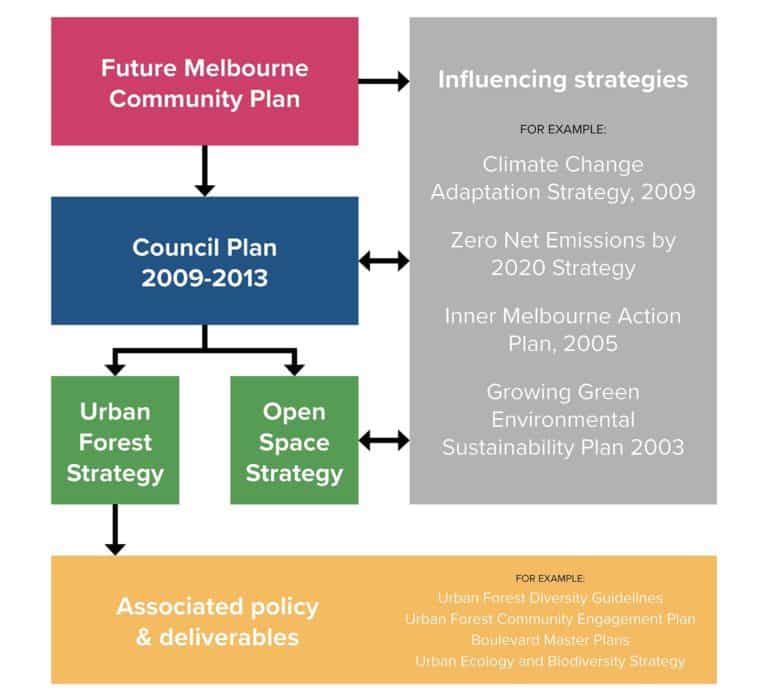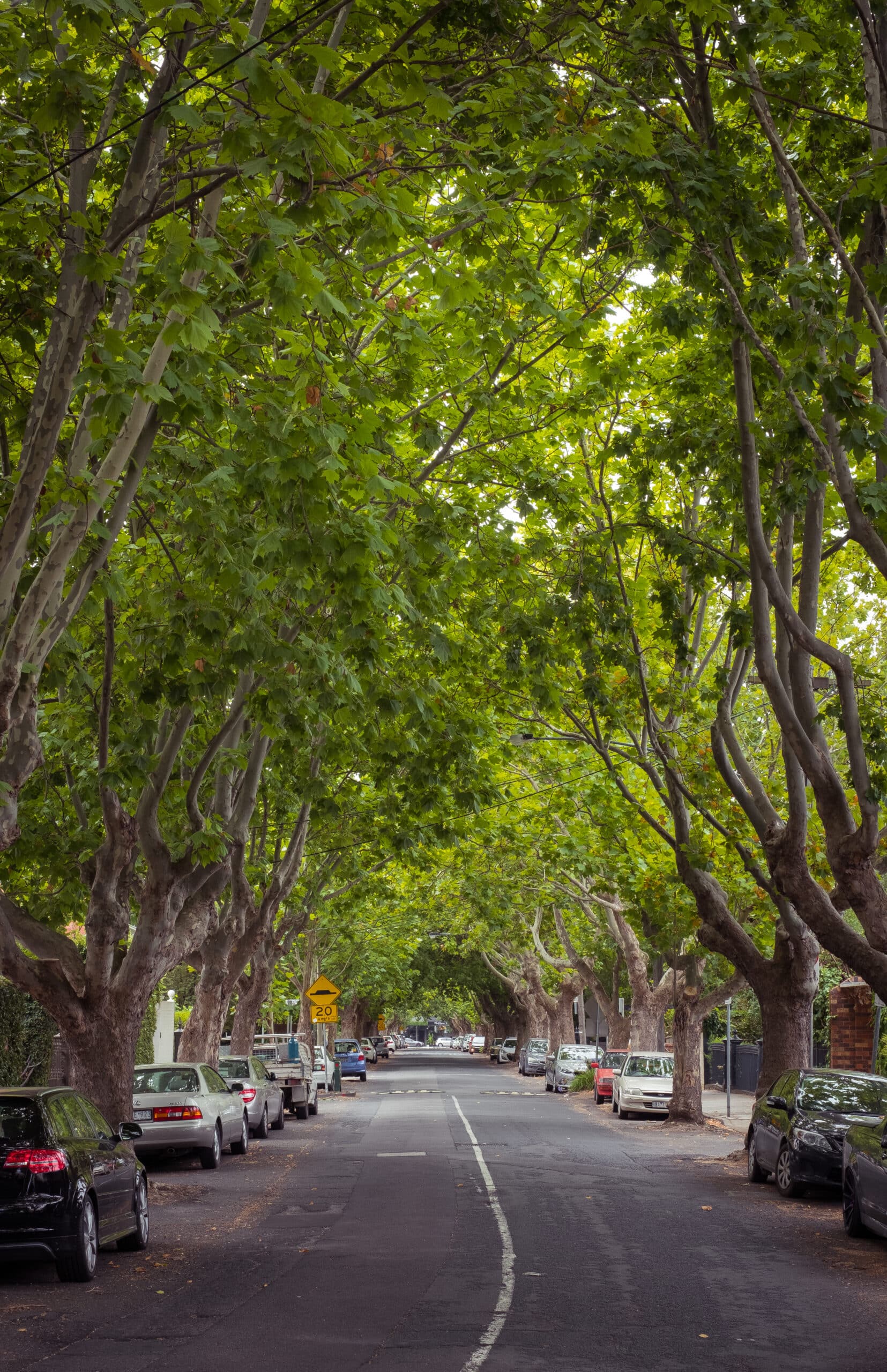Lesson
Part of: Urban Forests for Healthier Cities: Policy, Planning, Regulations, and Institutional Arrangements
Case Study: Greening for Resilience in Melbourne, Australia
BOOKMARK
Climate change threatens the way of life for residents of Melbourne, Australia. To contribute to city resilience against the threats of drought, heat, and extreme weather, the City of Melbourne developed an Urban Forest Strategy Plan. The plan draws from and informs many other municipal plans and strategies.

The plan highlights six strategies for the urban forest, as well as targets for each:

The Urban Forest Strategy Plan presents specific actions to achieve each target: for example, to improve vegetation health, it recommends annual health checks for every municipal tree. (City of Melbournce, 2014)